#2024 Chevrolet Camaro Colors
Explore tagged Tumblr posts
Text
Why Americans Stopped Buying Convertibles
We’ve Traded the Open-air Dream For Climate-Controlled Isolation.
— Mark Dent | May 3, 2023

A year after I graduated college, I decided to buy a car. I’d been driving a hand-me-down Hyundai sedan, but I wanted something more reliable for the miles I racked up driving around sprawling Dallas for my job as a reporter.
At first, I narrowed my search to the Mazda 6 — at least it was more fun than a Corolla. But as I saved a few options online, hoping for something in dark green, I said to hell with all that. I could buy a convertible for roughly the same price.
A couple weeks later, a dealer showed me a 2004 Ford Mustang, white with a cream-colored canvas top. He pressed a switch on the center console, and down went the top for my test drive. I’d never ridden in a convertible before. On back roads twisting through farmland, it felt like the sky had been lowered from the atmosphere, settling just a few feet above me, close enough to touch the clouds.
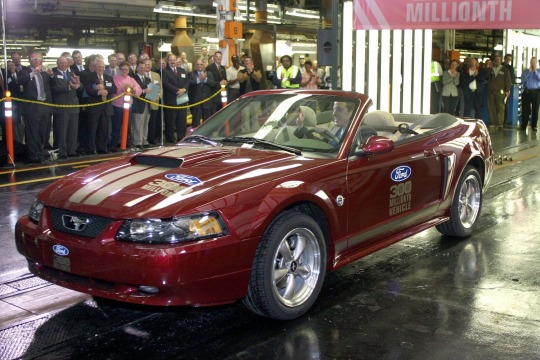
An early 2000s Mustang. Bill Pugliano/Getty Images
I bought the Mustang and drove it back into the city with the top down. Over the next couple years, I drove it like that as often as I could: on cool nights with the heat turned on and windows rolled up, on a summer road trip nearly all the way through Kansas until the sunburn became unbearable.
I never got sick of the convertible. It turned everyday monotony into an adventure, replaced the rigid confinement of sedans and SUVs with freedom and openness. Who wouldn’t want one?
But the year I bought my Mustang, in 2010, US convertible sales were down to ~140K, less than half of what they’d been just a few years earlier. That was during the Great Recession, near the auto industry’s nadir. Still, the decline has continued.
According to S&P Global Mobility, new retail registrations of convertibles totaled ~70K in the 12 months between March 2023 and February 2024, comprising ~0.6% of all vehicle sales. That’s down from ~2% in the mid-2000s.
2023 sales of the Mustang convertible, which celebrates its 60th anniversary this year, were down ~87% compared to 2001. Its rival, the Chevrolet Camaro, has been discontinued.
Convertibles are an endangered species, along with the American ethos they exemplified. When Carvana polled Americans on their dream cars last year, the most coveted was an SUV. The characteristic they sought most in their dream car wasn’t emotional attachment — it was technology.
We’re losing the messy, hair-flowing-in-the-wind version of the American Dream to something climate-controlled and closed off to the world. And we might never get it back.
The Car That ‘Satisfies A Youthful Ambition’
Growing up in the ’90s, I rode countless, boring miles in the passenger seats of my dad’s Toyota Camry sedan and mom’s Plymouth Voyager minivan.
I pined for a more exotic ride just out of my reach. My next-door neighbor had an old European convertible — a midlife crisis purchase if there ever were one — and I remember the college-aged woman across the street pulling into her family’s driveway (and looking far cooler) in a Mazda Miata.
This yearning went back generations, to the time automakers, after painstakingly working to enclose early model cars with roofs, realized they could spark people’s imaginations (and extract more from their wallets) by offering a topless experience.
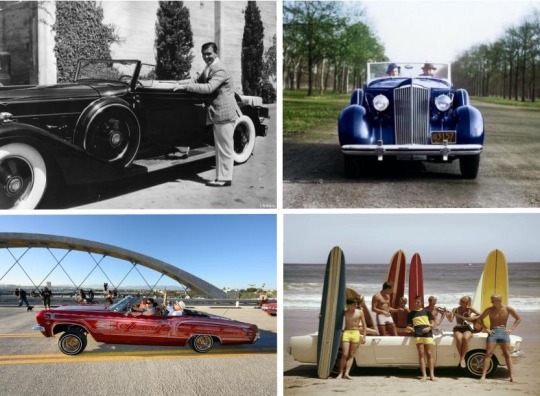
From Rhett Butler to beachgoers, everybody loved the convertible. Hulton Archive/H. Armstrong Roberts/Classicstock/Tom Kelley/Gary Leonard/Getty Images
Costing anywhere from $2K to $5K in the 1930s, roughly 2x-4x the average family income at the time, convertibles made by Duesenberg, Rolls-Royce, and Packard became status symbols for the prosperous few who could afford them.
“It is possible to follow the careers of stars through their motor cars,” noted a reporter in 1938. “When he or she first reaches the dizzy heights of movie fame, flash, gaudy cars are in order.”
Clark Gable owned a Packard convertible, and actor Wayne Morris preferred a topless ride in his Lincoln Zephyr “in any type of weather.” Marlene Dietrich was chauffeured in a tan Rolls-Royce convertible.
“No doubt,” wrote the reporter, “the gaudy car… satisfies a youthful ambition — and all of us have had it.”
The less starry got to fulfill their desires when Chevy, Lincoln, and Buick introduced roomy, space-aged convertibles in the ’50s and ’60s. My grandparents bought a 1962 seafoam-green Impala.
In 1964, Ford released the Mustang, the brainchild of famed auto developer and executive Lee Iacocca. Priced at ~$2.3K, or about one-third of the median family income, the Mustang was a magnet for middle-class Americans who wanted to inject adventure into their daily lives. It also helped bring annual convertible sales to ~500K in the mid-’60s, around 5% of total vehicle sales in America.
Safety concerns and a weak economy put a kibosh on convertible dreams in the ’70s. Cadillac claimed its ’76 Eldorado would be the last convertible ever designed, and total convertible sales fell to ~43K in 1982. But Iacocca reignited the flame with the release of the Chrysler LeBaron that year, ushering in the expanding convertible landscape I grew up with.
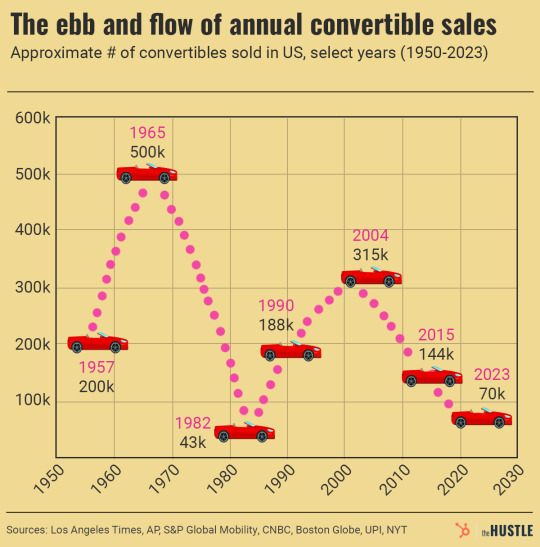
The Hustle
My dream car back then was a Dodge Viper, but I saw more practical convertibles everywhere in the ’90s, the peak era for manufacturers to turn the simplest of car models into adventure machines, equipped with rollover bars or fortified support pillars for safety.
The Pontiac Sunfire, Toyota Paseo, Chevrolet Cavalier, Mercury Capri, Honda Civic del Sol, Ford Probe, and Geo Metro (which could’ve lost to a riding lawn mower in a drag race) all had convertible versions.
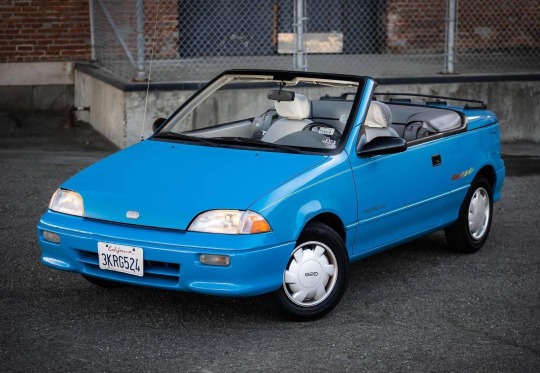
The not-so-fast Geo Metro exemplified the wide variety of convertibles available a generation ago. Cars & Bids
Annual convertible sales Climbed to ~170K in the mid-’90s. They increased to ~315K in 2004, about 2% of the entire vehicle market, as automakers perfected the retractable hard top (and, somehow, convinced Americans to buy PT Cruiser convertibles).
Yet, as I failed to save for a Toyota Celica convertible by my 16th birthday — my realistic vision of a gaudy purchase — a tectonic market shift was underway. You could see it reflected in choices made from the Heartland to Hollywood.
After Good Will Hunting catapulted Matt Damon and Ben Affleck onto the A-list, for instance, they splurged on cars just like Gable, Morris, and other young stars before them.
Except they bought Jeep Grand Cherokees. “The really dope new truck at the time,” Affleck later explained to IMDB.
The SUV Loophole
Back in the late ’70s, the legal distinction that helped precipitate the decline of convertibles (and cars in general) seemed insignificant. A loophole the size of a needle eye.
In response to the oil crisis and a burgeoning environmental movement, federal regulations went into effect in 1978 requiring automakers’ passenger car fleets to meet a fuel standard of 18 miles per gallon. But “passenger cars” meant sedans, station wagons, coupes, and convertibles.
It didn’t apply to “light trucks” such as minivans, pickups, and SUVs, the latter two of which were mostly used by farmers, contractors, and laborers who needed the extra space for hauling material. To avoid placing an economic burden on workers, light-truck fleets were subjected to lower standards. While automakers had to shrink cars to hit the fuel standard, light trucks remained spacious.
So began an emphasis on SUVs and trucks (and minivans, at least until an association with soccer moms doomed them). SUV sales increased from ~112K in 1981 to ~800K in 1987.
Most Americans still didn’t need to haul anything, but they were hooked. In 1987, a J.D. Power and Associates survey even found SUV owners felt a sense of adventure while driving them — similar to a convertible.
For automakers, the economics checked out.
“You can sell a Cadillac for a lot more than a Chevy even though the Cadillac only costs marginally more to produce than a Chevy. The same thing goes for those truck-based SUVs because they’re sold as rugged,” says David Lucsko, an Auburn University professor who researches automotive history. “You can sell them at a premium and rake in the profits.”
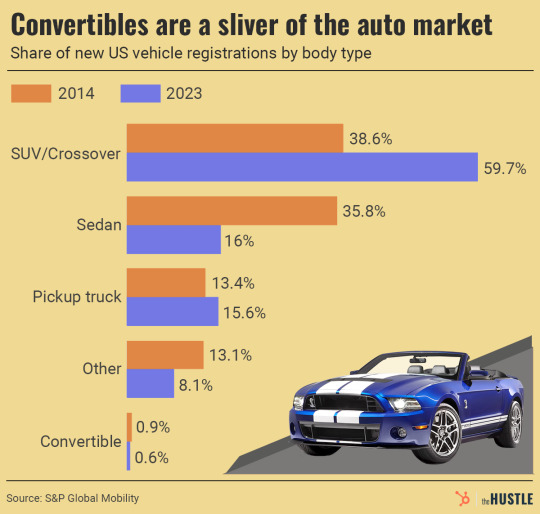
The Hustle
Later, brands popularized the crossover utility vehicle, giving consumers the space of an SUV with a smoother ride. Crossovers, despite being built on the same frame as a car, are typically classified as light trucks. The takeover was complete: Light trucks outsold cars for the first time in 2002. Their sales now comprise nearly 80% of the vehicle market.
No Cars Means No Convertibles
That shift has filled the roads with increasingly large vehicles, which is hardly an ideal environment for convertibles. But Drew Dorian, managing editor for Car and Driver, says he’s doubtful safety fears have driven their decline, noting that safety-concerned families would be unlikely to buy convertibles anyway.
The Insurance Institute for Highway Safety has found that, while SUVs have lower driver fatality rates than the average vehicle, convertibles aren’t any less safe than enclosed sedans or coupes.
Speaking of sedans and coupes: Many brands don’t even make them anymore. The only Ford car that hasn’t been discontinued in North America, for instance, is the Mustang. No more Taurus or Focus or Fusion. That’s been really bad for convertibles, which are typically derived from cars.
To develop all those ’90s convertibles, automakers just tweaked the design of popular sedans at a low cost. Now, according to Tom Libby, associate director of industry analysis and loyalty solutions at S&P Global Mobility, cars aren’t popular enough to justify turning into convertibles.
“To propose a convertible now, it’s almost impossible to create a proposal that includes a volume that’s big enough to make money,” he says.
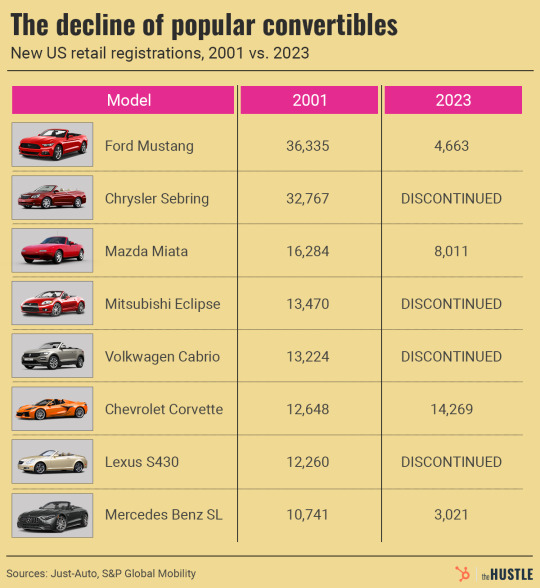
The Hustle
Money is also in short supply. Car companies are investing huge sums in the transition to electric vehicles, Libby says, and sales of EVs slowed last year, complicating the calculus of how to emphasize true EVs vs. hybrids.
Just as the purchase of a convertible requires a feeling of relative financial security and a sense of boldness, so does the act of designing one. And right now most automakers lack both.
Opting For Open Air
As with movies and clothing, trends rarely die in the auto industry. They go into hibernation until one successful experiment draws copycats and the trend becomes inescapable.
Just as the success of Iacocca’s Chrysler LeBaron led other brands to turn popular car models into convertibles in the ’80s and ’90s, Libby can imagine brands developing SUV convertibles as they seek niches for consumers demanding greater variation.
This makes sense: There’s increased time for adventure as millennials delay having kids or don’t have them at all. While summers may be excruciatingly hot, especially in the Sunbelt, the other seasons are warmer than ever. And Gen Zers crave experiences.
“The enjoyment of open air,” Libby says, “I don’t think that’s gone away.”
“But based on what happened to Nissan a few years ago,” he adds, “I don’t think [SUV convertibles are] imminent.”
He’s referring to Nissan’s crossover Murano convertible, which failed to gain traction in the 2010s. Land Rover’s Evoque was also swiftly discontinued. Americans spoke with their wallets: They didn’t want the open air.

The Land Rover Evoque. Andy Green/Land Rover via Getty Images
When I’m driving on temperate days, I rarely even see other drivers with their windows down. That might not be a coincidence. Lucsko, the car historian at Auburn, says automakers now design vehicles for consumers to seal themselves in.
“I think the car has become more and more a cocoon where we go to be isolated from the world,” he says.
Driving a convertible means being exposed to the world. It means embracing the elements and putting yourself out there, an ever-harder proposition in our increasingly curated, digital lives.
My own convertible era ended years ago. I had to ditch my Mustang for a move to hilly, snowbound central Pennsylvania. But I haven’t ditched my ambition for the open air, and I hope Americans haven’t either. Whether it’s a classic droptop or a futuristic roofless SUV, it will always feel good to say to hell with all that and buy a convertible.
#Transportation#Convertables#Open-air Dream#Climate-Controlled | Isolation#SUVs 🚙#Cars 🚙 🚗 🚘#The Hustle
0 notes
Text
Today, we have the 2024 Chevrolet Camaro! This vehicle is great for collectors and the sharkskin colored paint is gorgeous. Get it now at Jim Trenary Union!
Check out the vehicle here:
0 notes
Text
2024 Chevrolet Camaro Release Date, Models, Price
2024 Chevrolet Camaro Release Date, Models, Price
2024 Chevrolet Camaro Release Date, Models, Price – You would think that because Mustangs and Camaros are so popular, the professional’s success is based more on low prices than on their genuine value. The truth can’t go much farther, and the Chevy Camaro SS has arrived to show everyone, especially those of German ancestry, that American muscle emblems aren’t just alive but reborn. Competition…

View On WordPress
#2024 Chevrolet Camaro AWD#2024 Chevrolet Camaro Colors#2024 Chevrolet Camaro Cost#2024 Chevrolet Camaro Coupe#2024 Chevrolet Camaro Engine#2024 Chevrolet Camaro Features#2024 Chevrolet Camaro Horsepower#2024 Chevrolet Camaro Images#2024 Chevrolet Camaro Interior#2024 Chevrolet Camaro Lease#2024 Chevrolet Camaro Models#2024 Chevrolet Camaro MPG#2024 Chevrolet Camaro MSRP#2024 Chevrolet Camaro Price#2024 Chevrolet Camaro Release Date
0 notes
Text
2024 Chevrolet Camaro Colors, Price, Release Date
2024 Chevrolet Camaro Colors, Price, Release Date
2024 Chevrolet Camaro Colors, Price, Release Date – The 2024 Chevrolet Camaro Colors is a muscle automobile, like the Ford Mustang and Dodge Challenger. Classic muscle car features, a modern cabin, and better handling make this a rear-wheel-drive sports car. While the Challenger is just available as a coupe, it is also available as a convertible. Because of its low price and superior chassis, the…

View On WordPress
#2024 Chevrolet Camaro AWD#2024 Chevrolet Camaro Colors#2024 Chevrolet Camaro Cost#2024 Chevrolet Camaro Coupe#2024 Chevrolet Camaro Engine#2024 Chevrolet Camaro Features#2024 Chevrolet Camaro Horsepower#2024 Chevrolet Camaro Images#2024 Chevrolet Camaro Interior#2024 Chevrolet Camaro Lease#2024 Chevrolet Camaro Models#2024 Chevrolet Camaro MPG#2024 Chevrolet Camaro MSRP#2024 Chevrolet Camaro Price#2024 Chevrolet Camaro Release Date
1 note
·
View note
Text
2024 Chevrolet Camaro Price, Specs, Colors
2024 Chevrolet Camaro Price, Specs, Colors
2024 Chevrolet Camaro Price, Specs, Colors – In addition to the Ford Mustang and Dodge Challenger, the 2024 Chevrolet Camaro is a muscle vehicle worth considering. With its revised interior and handling performance, this rear-wheel-drive Camaro is a sports car that retains the classic muscle car dynamics. The Chevy and Ford have a coupe and convertible options, but the Challenger is only offered…

View On WordPress
#2024 Chevrolet Camaro Colors#2024 Chevrolet Camaro Cost#2024 Chevrolet Camaro Engine#2024 Chevrolet Camaro Features#2024 Chevrolet Camaro Horsepower#2024 Chevrolet Camaro Images#2024 Chevrolet Camaro Mid Engine#2024 Chevrolet Camaro Price#2024 Chevrolet Camaro Release Date#2024 Chevrolet Camaro Specs#2024 Chevrolet Camaro SS#2024 Chevrolet Camaro Z06#2024 Chevrolet Camaro ZL1#2024 Chevy Camaro Cost#2024 Chevy Camaro Price
0 notes